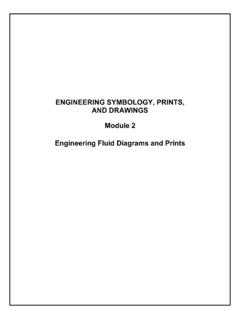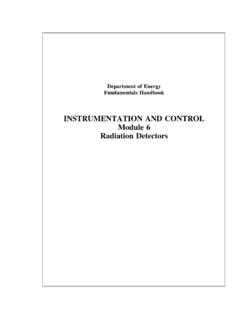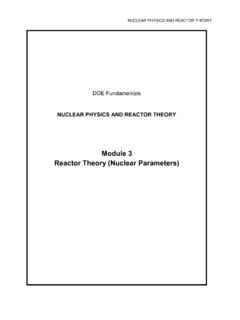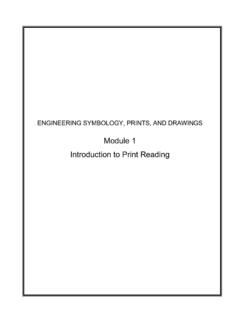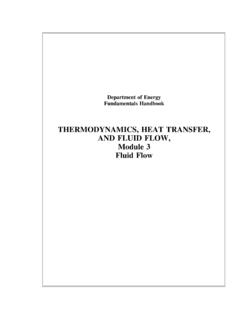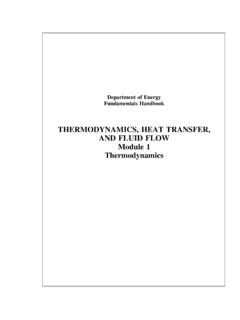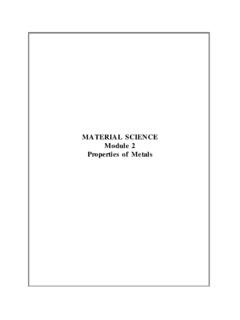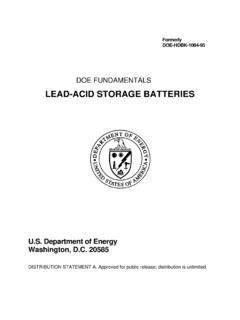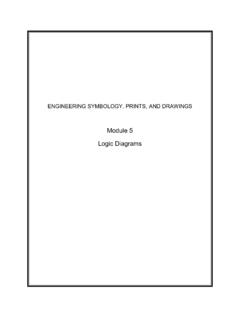Transcription of ENGINEERING SYMBOLOGY, PRINTS, AND DRAWINGS …
1 ENGINEERING SYMBOLOGY, PRINTS, AND DRAWINGS Module 3 Electrical Diagrams and Schematics Module 3: Electrical Diagrams and Schematics i TABLE OF CONTENTS LIST OF FIGURES .. ii LIST OF TABLES .. iii REFERENCES .. iv OBJECTIVES .. v ELECTRICAL DIAGRAMS AND SCHEMATICS .. 1 Symbology .. 2 Transformers .. 2 Switches .. 3 Fuses and Breakers .. 5 Relays, Contacts, Connectors, Lines, Resistors, and Miscellaneous Electrical Components .. 6 Large Components .. 7 Types of Electrical Diagrams or Schematics .. 9 Reading Electrical Diagrams and Schematics .. 14 Summary .. 17 ELECTRICAL WIRING AND SCHEMATIC DIAGRAM READING EXAMPLES .. 18 Examples .. 18 Summary .. 23 Module 3: Electrical Diagrams and Schematics ii LIST OF FIGURES Figure 1 Basic Transformer Symbols.
2 2 Figure 2 Transformer Polarity .. 2 Figure 3 Switches and Switch Symbols .. 3 Figure 4 Switch and Switch Status Symbology .. 4 Figure 5 Fuse and Circuit Breaker Symbols .. 5 Figure 6 3-phase and Removable Breaker Symbols .. 6 Figure 7 Common Electrical Component Symbols .. 7 Figure 8 Large Common Electrical Components .. 8 Figure 9 Comparison of an Electrical Schematic and a Pictorial Diagram .. 9 Figure 10 Comparison of an Electrical Schematic and a Wiring Diagram .. 10 Figure 11 Wiring Diagram of a Car's Electrical Circuit .. 11 Figure 12 Schematic of a Car's Electrical Circuit .. 12 Figure 13 Example Electrical Single Line .. 13 Figure 14 Examples of Relays and Relay Contacts .. 14 Figure 15 Ganged Switch Symbology.
3 15 Figure 16 Three-Phase Symbols .. 16 Figure 17 Example 1 .. 19 Figure 18 Example 2 .. 20 Module 3: Electrical Diagrams and Schematics iii LIST OF TABLES Table 1 Comparison Between Wiring and Schematic Diagrams .. 9 Module 3: Electrical Diagrams and Schematics iv REFERENCES asme , Dimensioning and Tolerancing. IEEE Std 315-1975 (Reaffirmed 1993), Graphic Symbols for Electrical and Electronic Diagrams. Gasperini, Richard E., Digital Troubleshooting, Movonics Company; Los Altos, California, 1976. Jensen - Helsel, ENGINEERING Drawing and Design, 7th Ed., McGraw-Hill Book Company, New York, (August 15, 2007). Lenk, John D., Handbook of Logic Circuits, Reston Publishing Company, Reston, Virginia, 1972.
4 Wickes, William E., Logic Design with Integrated Circuits, John Wiley & Sons, Inc, 1968. Naval Auxiliary Machinery, United States Naval Institute, Annapolis, Maryland, 1951. TPC Training Systems, Reading Schematics and Symbols, Technical Publishing Company, Barrington, Illinois, 1974. Arnell, Alvin, Standard Graphical Symbols, McGraw-Hill Book Company, 1963. George Masche, Systems Summary of a Westinghouse Pressurized Water Reactor, Westinghouse Electric Corporation, 1971. Smith-Zappe, Valve Selection Handbook, 5th Ed., Gulf Publishing Company, Houston, Texas, December 2003. Module 3: Electrical Diagrams and Schematics v TERMINAL OBJECTIVE Given an electrical print, READ and INTERPRET facility electrical diagrams and schematics.
5 ENABLING OBJECTIVES IDENTIFY the symbols used on ENGINEERING electrical DRAWINGS for the following components: a. Single-phase circuit breaker m. Electric motor (open/closed) n. Meters b. Three-phase circuit breaker o. Junctions (open/closed) p. In-line fuses c. Thermal overload q. Single switch d. "a" contact r. Multiple-position switch e. "b" contact s. Pushbutton switch f. Time-delay contacts t. Limit switches g. Relay u. Turbine-driven generator h. Potential transformer v. Motor-generator set i. Current transformer w. Generator (wye or delta) j. Single-phase transformer x. Diesel-driven generator k. Delta-wound transformer y. Battery l. Wye-wound transformer Given an electrical drawing of a circuit containing a transformer, DETERMINE the direction of current flow, as shown by the transformer's symbol.
6 IDENTIFY the symbols and/or codes used on ENGINEERING electrical DRAWINGS to depict the relationship between the following components: a. Relay and its contacts b. Switch and its contacts c. Interlocking device and its interlocked equipment Module 3: Electrical Diagrams and Schematics vi ENABLING OBJECTIVES (Cont.) STATE the condition in which all electrical devices are shown, unless otherwise noted on the diagram or schematic. Given a simple electrical schematic and initial conditions, DETERMINE the condition of the specified component ( , energized/de-energized, open/closed). Given a simple electrical schematic and initial conditions, IDENTIFY the power sources and/or loads and their status ( , energized or de-energized).
7 Module 3: Electrical Diagrams and Schematics 1 ELECTRICAL DIAGRAMS AND SCHEMATICS To read and interpret electrical diagrams and schematics, the basic symbols and conventions used in the drawing must be understood. This chapter concentrates on how electrical components are represented on diagrams and schematics. The function of the individual electrical components and the theory behind their operation is covered in more detail in the Electrical Science Handbook. EO IDENTIFY the symbols used on ENGINEERING electrical DRAWINGS for the following components: a. Single-phase circuit breaker m. Electric motor (open/closed) n. Meters b. Three-phase circuit breaker o. Junctions (open/closed) p. In-line fuses c. Thermal overload q.
8 Single switch d. "a" contact r. Multiple-position switch e. "b" contact s. Pushbutton switch f. Time-delay contacts t. Limit switches g. Relay u. Turbine-driven generator h. Potential transformer v. Motor-generator set i. Current transformer w. Generator (wye or delta) j. Single-phase transformer x. Diesel-driven generator k. Delta-wound transformer y. Battery l. Wye-wound transformer EO Given an electrical drawing of a circuit containing a transformer, DETERMINE the direction of current flow, as shown by the transformer's symbol. EO IDENTIFY the symbols and/or codes used on ENGINEERING electrical DRAWINGS to depict the relationship between the following components: a. Relay and its contacts b. Switch and its contacts c.
9 Interlocking device and its interlocked equipment EO STATE the condition in which all electrical devices are shown, unless otherwise noted on the diagram or schematic. EO Given a simple electrical schematic and initial conditions, DETERMINE the condition of the specified component ( , energized/de-energized, open/closed). Module 3: Electrical Diagrams and Schematics 2 Figure 1 Basic Transformer Symbols Symbology To read and interpret electrical diagrams and schematics, the reader must first be well versed in what the many symbols represent. This chapter discusses the common symbols used to depict the many components in electrical systems. Once mastered, this knowledge should enable the reader to successfully understand most electrical diagrams and schematics.
10 The information that follows provides details on the basic symbols used to represent components in electrical transmission, switching, control, and protection diagrams and schematics. Transformers The basic symbols for the various types of transformers are shown in Figure 1 (A). Figure 1 (B) shows how the basic symbol for the transformer is modified to represent specific types and transformer applications. In addition to the transformer symbol itself, polarity marks are sometimes used to indicate current flow in the circuit. This information can be used to determine the phase relationship (polarity) between the input and output terminals of a transformer. The marks usually appear as dots on a transformer symbol, as shown in Figure 2.
